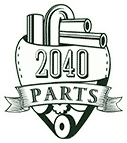Exhaust Manifolds for Sale
 Atp 101136 exhaust manifold(US $218.20)
Atp 101136 exhaust manifold(US $218.20) Atp 101254 exhaust manifold(US $127.80)
Atp 101254 exhaust manifold(US $127.80) Left exhaust manifold kit w/ hardware & gaskets dorman 674-501(US $123.93)
Left exhaust manifold kit w/ hardware & gaskets dorman 674-501(US $123.93) Exhaust manifold bmw x5 777250 04 05 06 assy lft lifetime warranty(US $194.99)
Exhaust manifold bmw x5 777250 04 05 06 assy lft lifetime warranty(US $194.99) Exhaust manifold sienna 1083584 04 05 06 recertified w-converter - in stock(US $294.99)
Exhaust manifold sienna 1083584 04 05 06 recertified w-converter - in stock(US $294.99) Exhaust manifold bmw m3 1106057 01 02 03 04 05 06(US $469.99)
Exhaust manifold bmw m3 1106057 01 02 03 04 05 06(US $469.99)
Ford and Toyota gain, Hyundai soars as industry sees strength
Tue, 01 Dec 2009Ford Motor Co. and Toyota Motor Corp. posted slight U.S.
Land Rover previews Discovery Vision Concept ahead of NY show
Thu, 03 Apr 2014Land Rover has given a first taste of the Discovery Vision Concept, which will debut at the New York International Auto Show later this month. The concept introduces the design themes that will define both the next generation of Freelander/LR2 and Discovery/LR4 models. Land Rover had previously announced that it would align its models under three pillars - 'luxury' for Range Rovers, 'leisure' for Discovery models – of which the Freelander/LR2 becomes – and 'dual purpose' for the long-awaited replacement for the Defender.
Worth a read: Wired's 'Why Getting It Wrong Is the Future of Design'
Thu, 25 Sep 2014Wired has just published a series of short articles entitled 13 Lessons for Design's New Golden Age. While there are some interesting examples cited in the piece, the concluding article, ‘Why Getting It Wrong Is the Future of Design' by the former creative director of Wired magazine, Scott Dadich, feels like it has particular resonance for car design. Dadich's Wrong Theory uses disruptive examples from the world of art, plus his own experience of working at Wired, to explain how design goes through phases: establishing a direction, creating a set of rules that define that direction and finally someone who dares to break from that direction.

